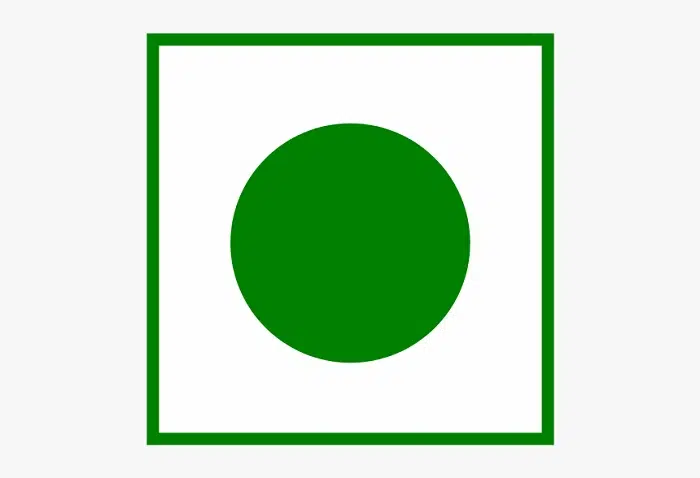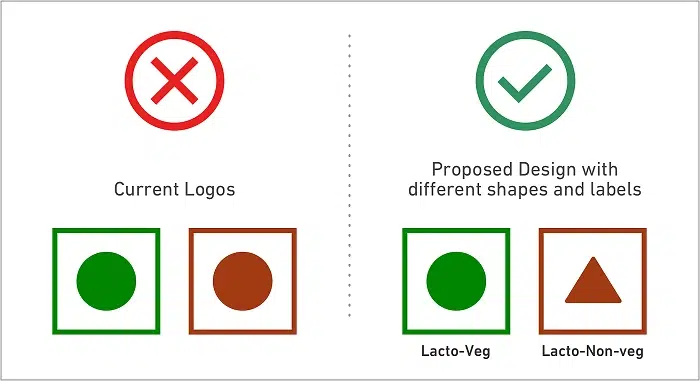The veg symbol, often seen as a green dot inside a square, is a mandatory food label in India that helps consumers identify whether a product is vegetarian. This small but powerful symbol plays a significant role in respecting religious, ethical, and dietary preferences. For millions of people, especially in India, seeing the veg symbol provides clarity, assurance, and compliance with deeply rooted food traditions.
Whether you’re a consumer trying to make informed choices, a food manufacturer ensuring regulatory compliance, or a designer creating packaging, understanding the veg symbol is essential.
What Is the Veg Symbol?
The veg symbol is a small green-colored dot enclosed in a green square. It is officially defined and regulated by the Food Safety and Standards Authority of India (FSSAI). This mark indicates that the food item contains only vegetarian ingredients and has not come into contact with meat, poultry, fish, or eggs during production or processing.
Introduced in 2001, the symbol became mandatory under India’s Food Safety and Standards (Packaging and Labelling) Regulations, providing transparency in packaged foods.
Importance of the Veg Symbol in India
Cultural and Religious Sensitivity
India is home to various communities that observe strict vegetarian diets due to religious beliefs—Hindus, Jains, and certain Buddhists, for example. The veg symbol helps protect their dietary principles.
Ethical and Lifestyle Choices
Many individuals follow vegetarianism for ethical or environmental reasons. The veg symbol allows them to shop with confidence.
Legal Compliance for Brands
For packaged food companies, clearly marking vegetarian and non-vegetarian products is a legal requirement in India. Non-compliance can result in penalties and loss of consumer trust.
Official Guidelines for Using the Veg Symbol
The FSSAI provides strict regulations regarding the size, color, and placement of the veg symbol:
- Color: The dot and square must be in green
- Shape: Solid green circle inside a green square border
- Size: Not less than 3 mm on each side
- Placement: On the front panel of the package, next to the product name
Failure to follow these specifications can lead to regulatory action and consumer complaints.
Where You’ll Find the Veg Symbol
Packaged Food Products
You’ll see the veg symbol on snacks, beverages, sauces, and ready-to-eat meals sold in supermarkets or online grocery platforms.
Dairy and Plant-Based Foods
Vegetarian items such as milk, cheese, tofu, and plant-based meat alternatives also carry the veg symbol to clarify their ingredients.
Airline and Train Meals
Food served in Indian Railways and domestic airlines is labeled with veg or non-veg symbols to accommodate passengers’ preferences.
Restaurant Menus and Delivery Apps
Many restaurants indicate veg items with a green dot in their menus, and food delivery apps like Swiggy and Zomato use the veg symbol for vegetarian filters and product listings.
Difference Between Veg and Non-Veg Symbols
The non-veg symbol is almost identical in design but colored in brown. It consists of a brown dot inside a brown square and is used to denote items that contain meat, eggs, or fish.
Both symbols are intended to help consumers quickly differentiate between vegetarian and non-vegetarian products, regardless of packaging design or brand.
Is the Veg Symbol Used Outside India?
While the veg symbol is specific to India and mandated by Indian food law, some food manufacturers exporting to Indian markets also use it to meet compliance requirements. However, other countries typically use textual labels like “Suitable for Vegetarians” or voluntary vegan symbols, which are not always regulated by law.
Design and Usage Tips for the Veg Symbol
For Food Businesses and Packaging Designers
- Always follow FSSAI color and size guidelines
- Place the veg symbol in a visible location, preferably near the brand name or ingredients list
- Use scalable vector files to maintain clarity when resizing for different packaging formats
For Digital Applications
On e-commerce websites and mobile apps, the veg symbol should appear alongside the product image and title. It should be easily viewable without zooming or scrolling.
Legal Penalties for Incorrect Usage
Misrepresenting a non-vegetarian product as vegetarian, or failing to label appropriately, can lead to serious legal consequences under Indian food safety laws. Offenders may face product recalls, fines, or suspension of food licenses.
FAQs About the Veg Symbol
What does the veg symbol mean?
It means the product is vegetarian and does not contain any animal-derived ingredients like meat, fish, or eggs.
Is the veg symbol mandatory in India?
Yes. All packaged food items must display the veg or non-veg symbol as per FSSAI regulations.
Can eggs be included under the veg symbol?
No. Products containing eggs must carry the brown non-veg symbol. The green veg symbol is for eggless items only.
Where is the veg symbol placed on packaging?
It is usually on the front panel, close to the product name or near the list of ingredients.
Is the veg symbol used outside India?
Not officially. However, Indian export products may carry it, and other countries may use different vegetarian indicators.
The veg symbol might appear small on a food package, but its significance is massive. For millions of consumers, it is a quick and trusted guide to choosing the right product. For brands, it’s a legal and ethical responsibility. Whether you’re designing a new product, shopping for groceries, or ordering online, understanding and recognizing the veg symbol ensures you make informed and respectful choices.



